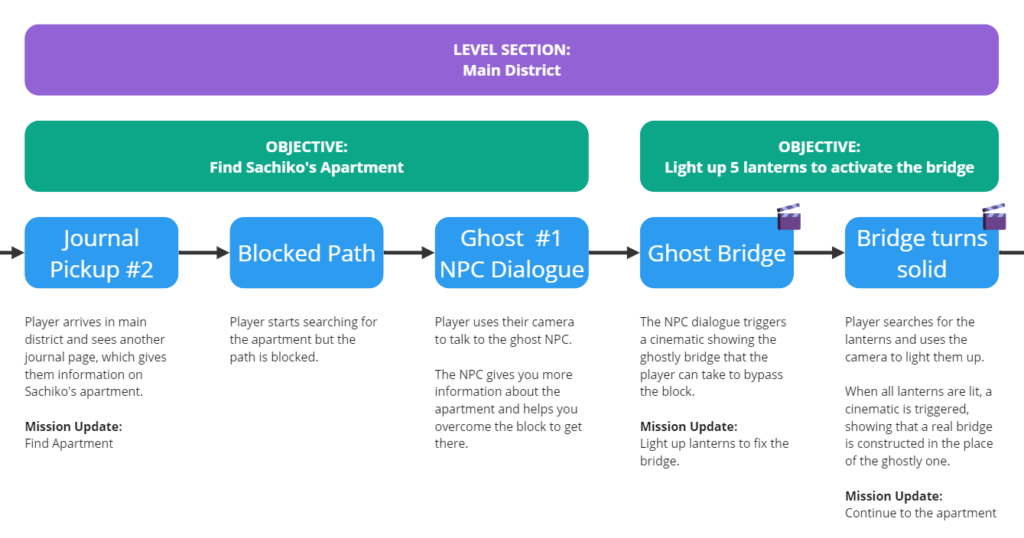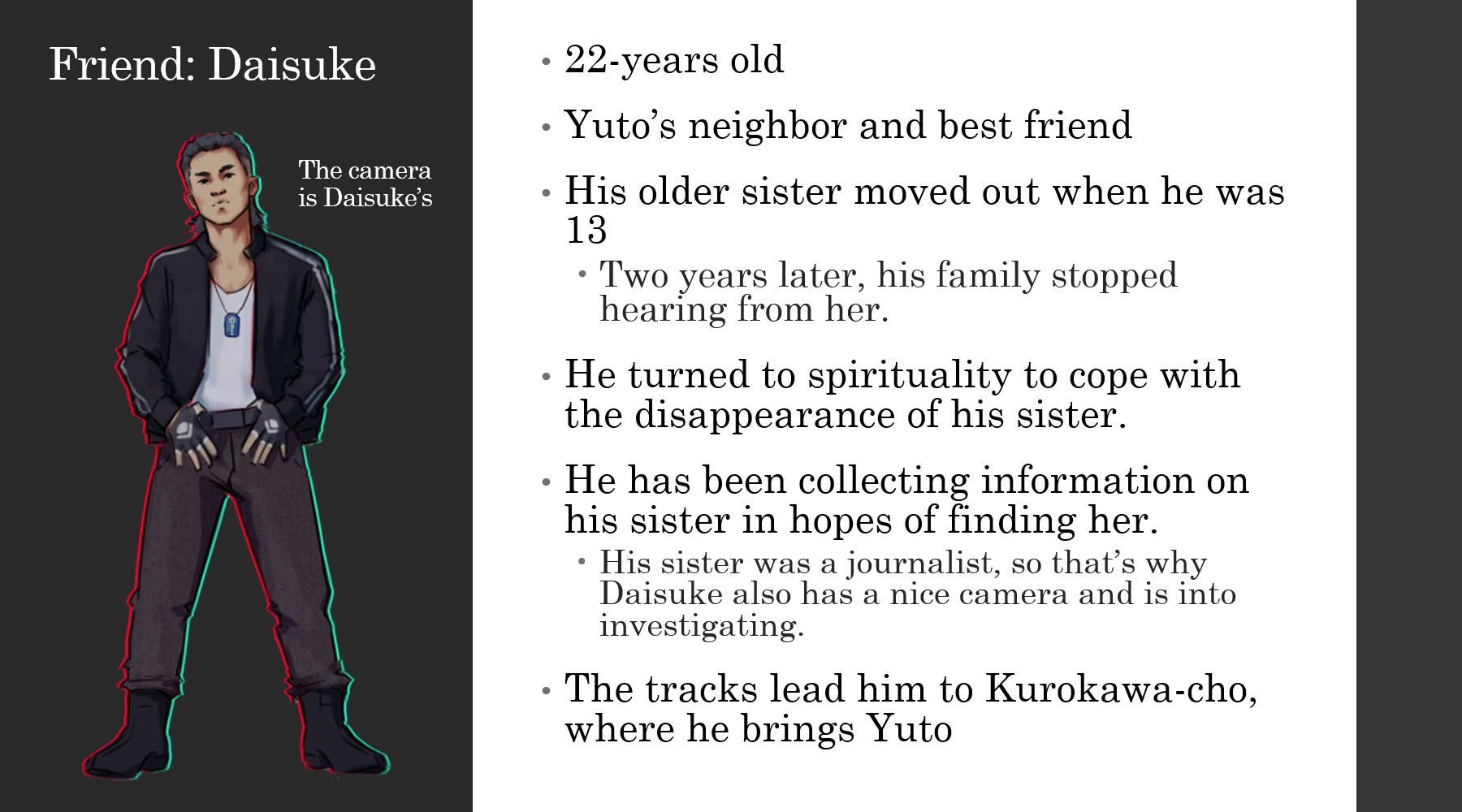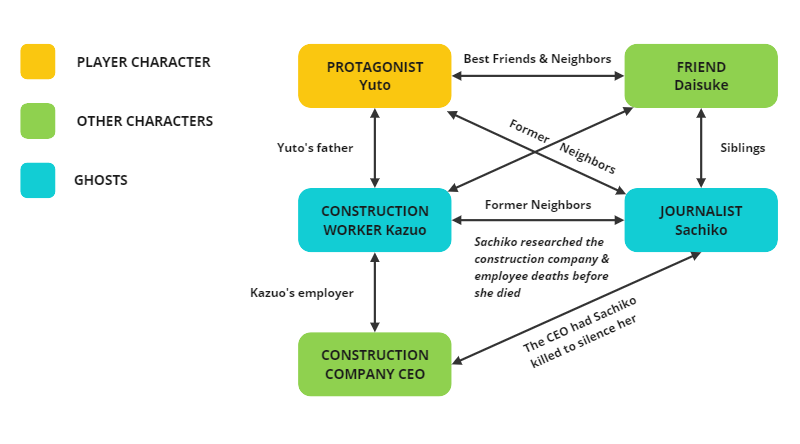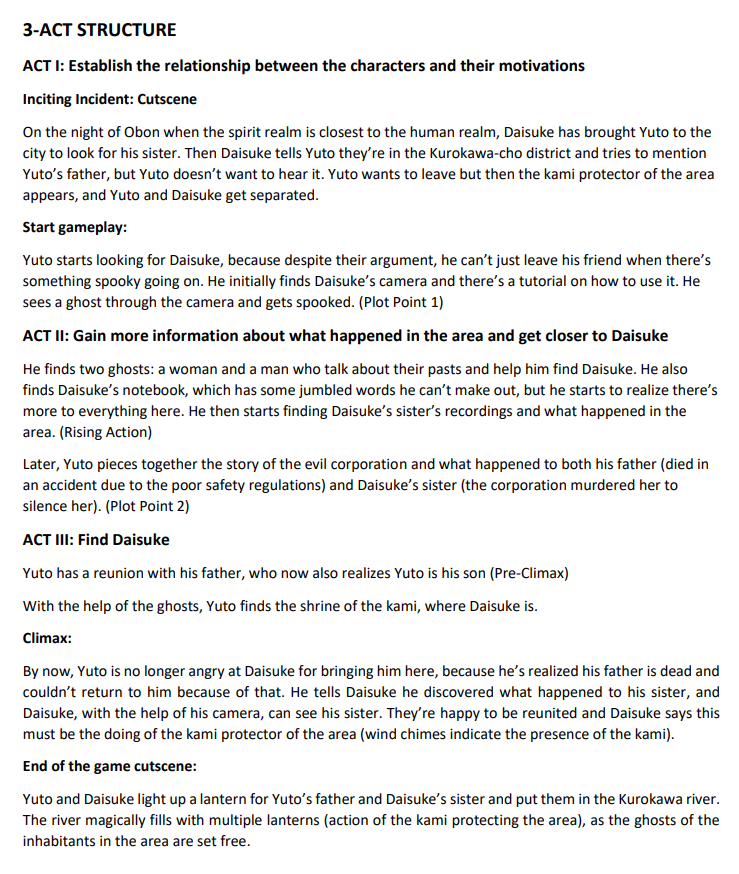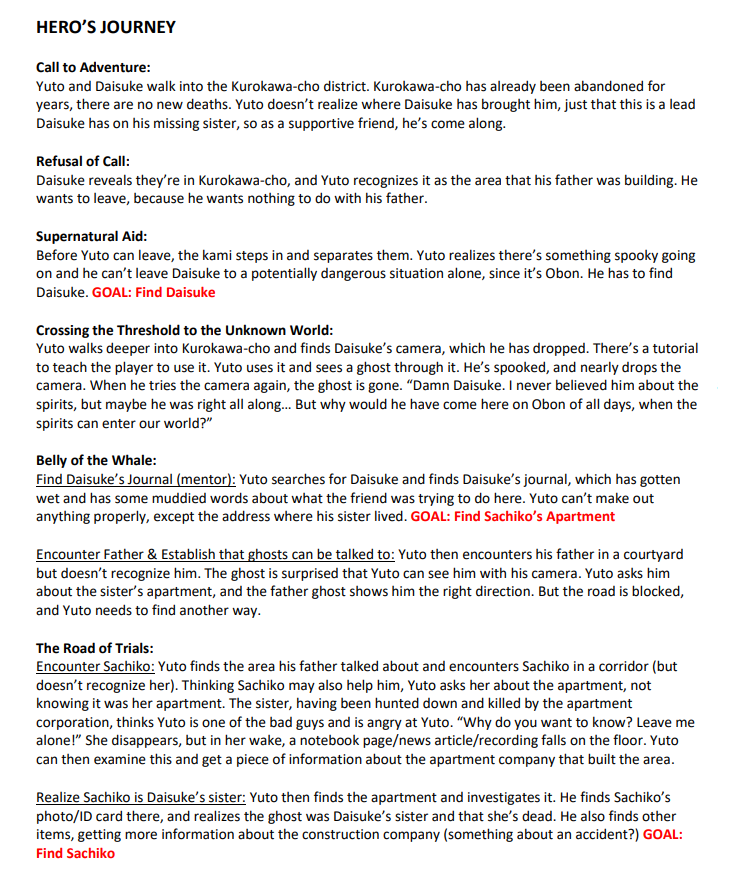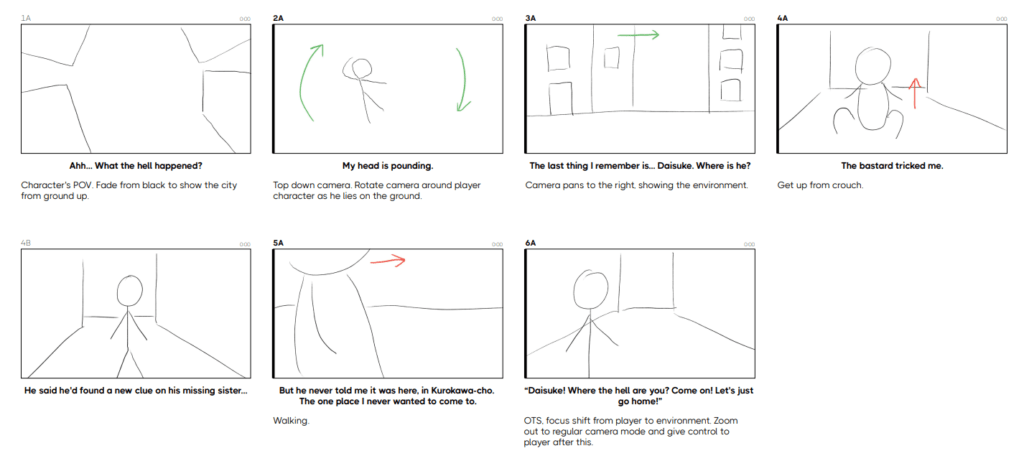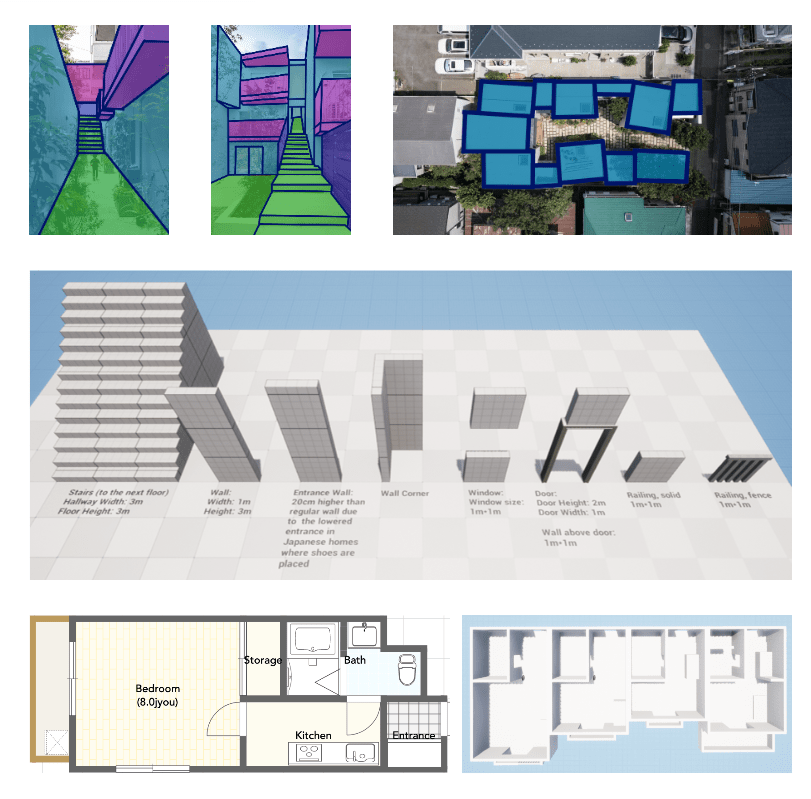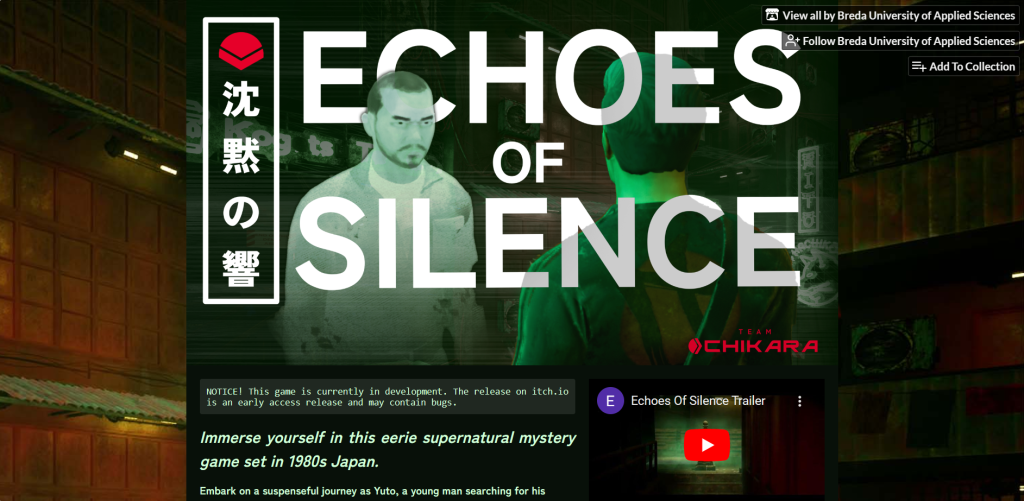Echoes of Silence
Level Designer
Echoes of Silence is a third-person narrative mystery game made with Unreal Engine 5. It was a student project during my second year of game design studies at BUas. My main areas of responsibility were player onboarding, mission design, narrative design, and coordinating the design team.
12-16 People
Unreal Engine 5
4 Months
Overview
Echoes of Silence
Echoes of Silence is a third-person supernatural mystery game set in 1980s Japan. Embark on a suspenseful journey as Yuto, a young man searching for his missing friend in a haunted city district.
Switch from third-person to first-person view to use your camera to communicate with spirits, find clues in the environment, and solve puzzles that take you closer to uncovering the truth.
Game Pillars
EXPLORATION
Explore the abandoned city district that is inspired by Japan in the 1980s and Japanese spiritualism.
CAMERA
Switch to first-person mode and use your camera to see and communicate with the ghosts of the former residents.
MYSTERY
Discover the mystery of what happened in this haunted city district and uncover secrets as you look for your friend.
Timeline
This is the timeline of my contrbutions for this project.
Research
Worldbuilding
Narrative Beats
Mission Design
Dialogue Script Writing
Implementation in Engine
Playtesting & Iteration
Player Onboarding
I was responsible for the onboarding section of the game, making sure that the gameplay and narrative align and that the player understands what to do.
Onboarding: I designed what the player needs to understand before progressing further, and how to teach them that. I then implemented this in engine by adding trigger events for cutscenes, tutorial text, and changes in the mission.
Cutscenes: I implemented the fade from black in the beginning and the camera pick-up cutscenes.
Dialogue & Tutorial text: I wrote and implemented dialogue and tutorial texts in engine using the dialogue system the programmers had made.
Missions: I designed the missions in the top-left corner of the screen and implemented them in engine together with the programmers.
The main goal of the beginning section was to get the player to understand how to use the camera.
- Player picks up camera.
- Player uses camera for the first time and is shown with a cutscene that they can see ghosts with it.
- The player’s path is blocked.
- Player needs to activate the camera again and use it to solve a puzzle to progress.
Mission Design
Mission Beats
I designed the main mission of the game. The mission was designed to guide the player throughout the game and help them understand what to do next in order to progress.
I determined what the player should do at each point, where in the level these interactions take place, what triggers the next part of the mission, and if there are any cut scenes in-between.
The image on the right shows a part of the main mission, a lantern puzzle, which takes place in the main district of the level.
Mission Map
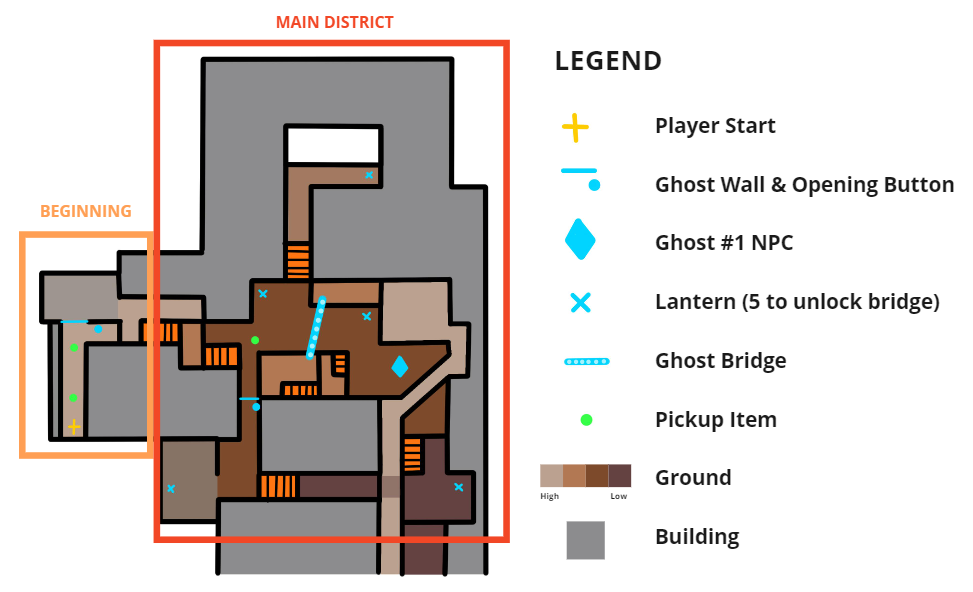
The beginning area on the left is the player onboarding section.
The main district is the area where the lantern puzzle described in the graph above takes place.
This top-down map shows the placement of everything needed for the mission, including the ghost NPC that triggers the ghost bridge and the lanterns the player needs to activate to turn it into a real bridge.
Mission Implementation in Engine
The team’s programmers created the mission system for the game, which I used to implement the mission in the game.
This video showcases the lantern puzzle from beginning to end.
Narrative Design
Worldbuilding
The setting of the game is Japan in the 1980s, and we borrowed heavily from Japanese culture and history to make the world seem realistic. Together with the other narrative designer on the project, my responsibility was to create a world that feels mysterious to the player with a story that is easy to follow without giving too much information too early.
Historical Events
From 1950s to 1970s, the Japanese population was rapidly growing, and new housing was needed. Many danchi, or large apartment clusters, were built during the time. The fictional city district of Kurokawa-cho was also built during this time, and later abandoned due to safety concerns.
Japanese Spiritualism
Japanese culture is heavily influenced by the mix of the two main religions, Shintoism and Buddhism. We borrowed spirits like yuurei (ghosts that have stayed behind due to unfinished business) and events like Obon (when the spirit realm is the closest to the human realm) for our game.
Characters
Narrative Beats
I initially wrote a one-page outline for the game using the 3-Act Story Structure, which was then expanded using the Hero’s Journey.
The story beats are based on this, and written to match the locations in the game and include the player goals for each beat.
Dialogue Script Writing
I wrote dialogue script for the player character and NPCs.
The script went through four iteration cycles based on feedback and playtesting data from several players.
It was a challenge to balance the dialogue so that the narrative is clear to the players but not too obvious in a way that it would spoil the mystery of the game.
I implemented the narrative in the game using the dialogue system that the team’s programmers had created.
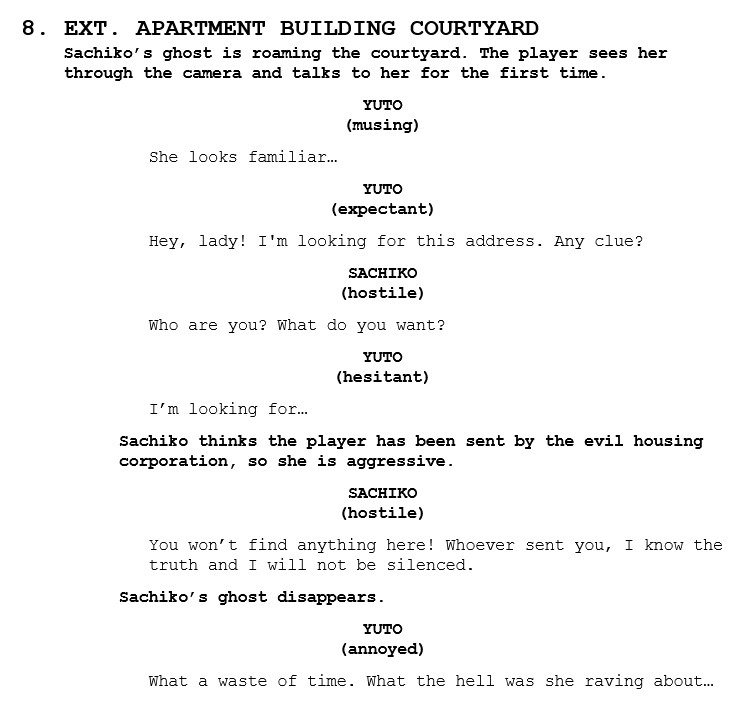
Cinematics
I planned cinematics for the game by drawing storyboards. We had limited animators and riggers on the team, so I tried to plan the cinematics with the existing animations in mind.
The game also had cinematic transitions to get the player to focus on something after dialogue or when entering a new area. I implemented these transitions in the engine with Unreal Engine sequencer.
Modular Kit
During pre-production, I established the metrics with the main level designer, such as building dimensions and overall scale for the level.
To speed up the level blockout process, I created a modular kit for the game based on real-life architecture of small Japanese apartments in the 1980s and the established metrics.
I blocked out example apartments with the modular kit based on real apartments while keeping in mind that they needed to be playable spaces, and adjusting the dimensions of the rooms to reflect that.
Design Lead Responsibilities
Team Management
The team had 4 designers besides myself.
As the design lead, I was responsible for the following:
- Reviewing team members’ work and signing it off
- Organizing meetings and daily standups
- Supporting the team by checking in on them and their work
- Prioritizing designers’ tasks and solving blocks
- Mitigating conflicts in the team
Project Management
- Project macro planning
- Establishing the project backlog and user stories for each sprint
- Maintaining creative direction and vision for the game
- Creating and updating design documentation
- Ensuring alignment of work
Tools used:
JIRA
Project management
MIRO
Planning
MICROSOFT OFFICE
Design documentation
MICROSOFT TEAMS
Online meetings and communication
PERFORCE
Source control
Result
Learning Outcome
My main learning outcome for this project was how to entwine narrative with gameplay and especially level design through worldbuilding, missions, and environmental storytelling.
As the design lead, I also had opportunity to improve my communication skills, along with project management and my knowledge of the Scrum method through macro planning, task prioritization,and ensuring alignment of work across the designers, programmers, and artists.
